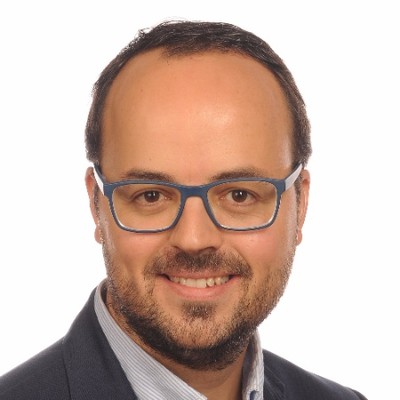Keeping local affiliates on track with pharmacovigilance

Local affiliates can be overwhelmed by the often-competing demands of global companies and local health authorities. They are invariably handling multiple responsibilities, including regulatory compliance and quality assurance, stretching their capabilities along with the ability to address each demand adequately. This is particularly evident in smaller markets, where resources are limited.
These demands place companies at risk of falling foul of regulatory compliance requirements, particularly in pharmacovigilance (PV), given the importance of patient safety. What makes this highly regulated field more complex are the differing expectations at global and local levels.
It is also an area in which local affiliates often lack the expertise to deal with complex regulatory requirements. These can include assurance of 24/7 cover, local presence, and local language.
While marketing authorisation holders (MAHs) are striving to standardise PV processes as much as possible, experience shows that they must balance the global needs with local requirements and barriers, such as resource issues at the local level.
The impact of globalisation
As the industry has expanded into new markets, new challenges have arisen. In some countries, PV regulations are very strict, while others have no clear guidelines.
Regulations can also vary considerably from one country to the next, even within more cohesive markets such as the European Union (EU).2 These can include anything from the terms for reporting timelines for adverse events to language requirements and risk management plans for local populations.
Taiwan, for example, has strict guidelines for the submission of safety information from overseas, which must be managed closely with the central PV function and the health authority. South Africa is another country stepping up its PV oversight, rolling out an ambitious PV inspection plan across the country and providing clear requirements for the qualified person for pharmacovigilance (QPPV).
Companies therefore rely on local knowledge to give them a better understanding of ever-evolving conditions on the ground. This is even more critical in countries where regulatory updates are not always shared via standard channels, such as the authority’s website.
Challenges for local affiliates
When it comes to resources, local affiliates are likely to be stretched in many different directions and are often poorly equipped for the task at hand.
Many companies do not give them the support or training they need to meet their PV obligations. Without adequate technology, personnel, or operational support, they will be unable to perform key operational tasks, let alone manage pharmacovigilance effectively.
Companies can underestimate the complexities of local regulatory requirements and leave locals to manage compliance with inadequate oversight, experience shows. They need to monitor local affiliates consistently to ensure they are staying on track and meeting the requirements of relevant health authorities.
It is also important that local affiliates develop and maintain strong relationships with health authorities. This will help them stay on top of local requirements and reduce compliance hurdles.
Challenges for companies
Having PV contacts on the ground in each market is highly advisable and, in many situations, a requirement. The Austrian authority has started to request a local PV presence, local experts have reported, while Botswana has recently changed its PV legislation requiring the same.
Nevertheless, it isn't always easy to find suitable candidates. In Algeria and Tunisia, for example, there are on-the-ground reports of PV personnel heading overseas in search of better opportunities.
In Oman, multinational companies that do not have a scientific office in the country or any another Gulf Cooperation Council (GCC) country, are required to appoint a QPPV pharmacist who lives in Oman. But this creates a conflict of interest as, in our experience, most Omani pharmacists work for the health authority or public institutions.
With the complexities and diversity of PV regulations, however, MAHs cannot afford to be without eyes on the ground. Even in markets such as the Eurasian Economic Union (EAEU), where some aspects of the regulatory framework have been simplified, companies still need localised strategies for compliance for each jurisdiction – such as translations, local safety data to support safety assessments, and specific risk management plans, experts in the region report.
Building partnerships
An increasing number of companies are turning to third parties to manage local PV requirements.
While there are merits in this approach, it is critical that MAHs ensure their partner is properly integrated into the business. This includes providing them with appropriate access to information and connecting them with relevant stakeholders, internally and externally. The local affiliates should be part of this process from the start to ensure buy-in.
Companies are advised to outline expectations clearly so that all parties are in agreement. This includes the activities to be undertaken, the processes involved, and the compensation required. Our experience shows that, without clear objectives, PV teams will struggle to gain traction and operate effectively.
While MAHs are ceding some of the responsibilities to a third party, they should not relinquish control, since any mismanagement of the process puts the company at risk. The MAH or sponsor remains legally liable for compliance, as mandated by most regulatory authorities.
It is, therefore, critical to maintain oversight of the pharmacovigilance system master file (PSMF) to ensure that external partners uphold the same rigorous compliance standards.
Smoothing the PV pathways
Companies that adapt global strategies to meet local needs face a less complicated journey to compliance. This may require investment in language translation, staff training, and local regulatory expertise.
Training should be tailored to each region and include simulations or workshops on handling PV inspections. Processes should also be streamlined so that local staff are not overburdened with irrelevant processes that can be better handled at headquarters.
They also need ongoing support, with clear protocols for escalating and responding to any safety issues. This may include employing automation tools that can detect potential safety signals, a process that is growing in popularity.
A local focus also means developing an understanding of how local affiliates and their health authorities communicate. Where traditional avenues of communication are not used, companies need to find relevant local alternatives such as WhatsApp groups. There is also a need to foster personal relationships with the health authorities.
Those companies that choose to outsource their local PV processes should have built-in systems for regular communication between global PV teams and local affiliates. An open and transparent approach increases cooperation, encouraging greater compliance and a better outcome for all.
The information provided in this article does not constitute legal advice. PharmaLex and Cencora strongly encourage readers to review available information related to the topics discussed herein and to rely on their own experience and expertise in making decisions related thereto.
References
1. The importance of pharmacovigilance, WHO. https://iris.who.int/bitstream/handle/10665/42493/a75646.pdf
2. Information on the Member States requirement for the nomination of a pharmacovigilance (PhV) contact person at national level – Human medicines requirements. Oct 2024. https://www.ema.europa.eu/en/documents/other/information-member-states-requirement-nomination-pharmacovigilance-phv-contact-person-national-level_en.pdf
3. Regulations for Reporting Serious Adverse Reactions of Medicaments, Ministry of Health and Welfare, Taiwan, Updated March 2024. https://law.moj.gov.tw/ENG/LawClass/LawAll.aspx?pcode=L0030049
4. Guideline on pharmacovigilance systems, South African Health Products Regulatory Authority. https://www.sahpra.org.za/wp-content/uploads/2023/06/SAHPGL-CEM-PV-02_v2-Guideline-on-Pharmacovigilance-Systems.pdf
5. Pharmacovigilance Guidance Document for Market Authorization Holders (MAHs) issue 3.0. Document nº BOMRA/PCT/PV/P01/G02. https://bomra.co.bw/wpfd_file/guideline-pharmacovigilance-guidance-document-for-market-authorization-holders-mahs-bomra-pct-pv-p01-g02-iss3-2/
6. Pharmacovigilance Systems in Arab Countries: Overview of 22 Arab Countries, Drug Saf 42, 849–868 (2019). https://doi.org/10.1007/s40264-019-00807-4
7. EAEU continues harmonizing requirements for medicine quality control, EEC News, June 2024. https://eec.eaeunion.org/en/news/v-eaes-prodolzhena-rabota-po-garmonizatsii-trebovaniy-k-kontrolyu-kachestva-lekarstv/
8. Pharmacovigilance Market Size, Fortune Business Insights, Updated Oct 2024.
Source: https://www.fortunebusinessinsights.com/pharmacovigilance-pv-market-102746
9. Pharmacovigilance system: questions and answers, subcontracting pharmacovigilance activities (Q3). https://www.ema.europa.eu/en/human-regulatory-overview/post-authorisation/pharmacovigilance-post-authorisation/pharmacovigilance-system-questions-answers#:~:text=When%20delegating%20any%20activities%20concerning,to%20competent%20authorities%20upon%20request
About the authors

Alex Brenchat, PhD, is VP and practice area lead for local pharmacovigilance services at PharmaLex. Brenchat has more than 20 years of experience in the pharmaceutical industry, including in pre-clinical and clinical research, publishing scientific articles, as well as supporting posters and patents for innovative pharmaceutical products.

José Miguel Rivas Romero is program manager and service line lead for local pharmacovigilance services and pharmacovigilance expert at PharmaLex. Rivas Romero has more than 10 years of experience in the pharmaceutical industry specialising in the design and implementation of local pharmacovigilance strategies across organisations.











